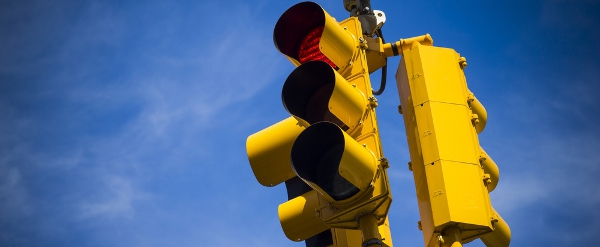
Dublin City Council is using smartphones and tablets to manage the city’s traffic systems.
Engineers working for the Irish capital have adopted mobile devices to improve their maintenance of traffic lights and crossings after the council installed a web-based system to monitor the conditions of the city’s road infrastructure.
In-house staff and contractors ditched old hardware to access the recently-introduced system via apps on smartphones and tablets, with the council citing significant improvements in service delivery as well as lower costs as a result.
The web-based maintenance system is configured and encrypted for secure access from multiple browsers, while roadside engineers need only tap the app to view and enter their notes while on a job, with managers using the system to get a more complete overview of the performance of the traffic equipment.
Dublin City Council said it has lowered hardware procurement costs with the web-based system, while the ability to quickly inform contractors of faults means reaction times to fix problems are faster, minimising equipment downtime.
The new system is just one example of how local authorities are using technology to revolutionise transport systems, and was cited in a guide released by the Institute of Engineering and Technology (IET) and Intelligent Transport Systems (ITS) today.
The Local Authority Guide to Emerging Transport Technology attempts to outline the ability of technology to solve transport issues, with examples ranging from using Bluetooth to help transport planners analyse journeys in real time to Milton Keynes City Council’s aim to replace diesel buses with a new fleet of electric buses, a project starting in December.
Hampshire County Council, meanwhile, has cut CO2 emissions by an estimated 4,000 tonnes a year – the equivalent of 1,600 cars’ worth – by introducing a smarter street lighting system for more than 100,000 lights and signs.
The AGD Systems-provided lighting solution dims street lights during quieter nighttime periods and the early hours of the day when fewer vehicles are on the roads, reducing energy consumption, and therefore carbon emissions, dramatically.
The system is radar-enabled, and so can adjust the lighting in response to the volume of traffic it detects, providing an added advantage in measuring traffic flows of vehicles, bicycles and pedestrians.
Miles Elsden, acting chief scientist for the Department for Transport, said: "Given today’s challenging financial environment, local authorities are finding it increasingly difficult to deliver the transport systems that people need. This new guide gives a comprehensive overview of the potentially cost-saving new technologies available for local transport, which will hopefully encourage more local authorities to take a fresh approach to the way the plan and procure for transport in the future."
The IET’s director of governance and policy, Alison Carr, added: "Recent advances in transport technologies offer excellent opportunities for local authorities to deliver transport services more effectively and efficiently – but there are a number of barriers to overcome, from lack of awareness of what is possible to the need for new, more flexible procurement.
"This guide aims to open local authorities’ eyes to the new world of possibilities out there when it comes to developing their transport systems – and to the opportunities new technologies present to reduce costs."
The guide is available to download here.






